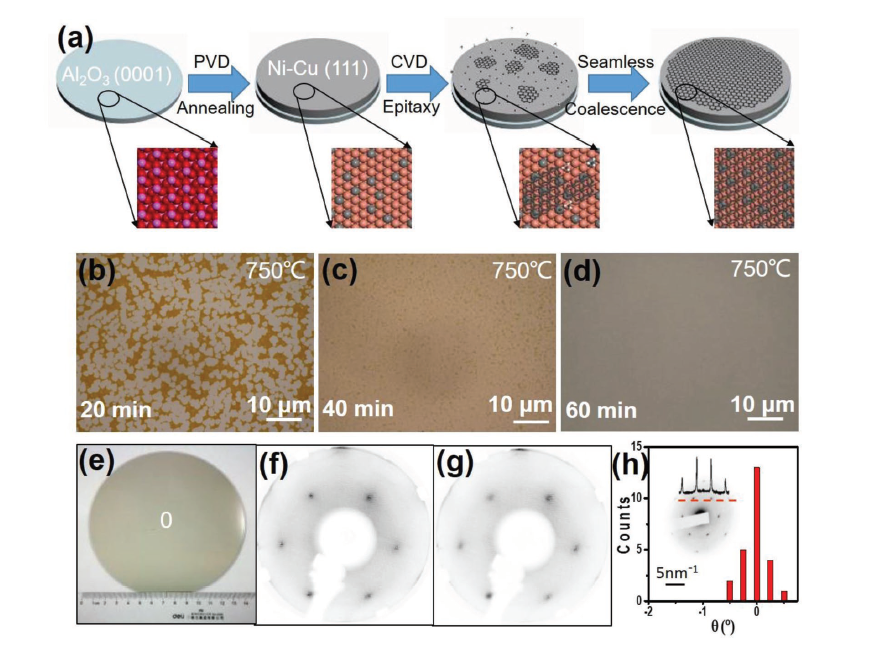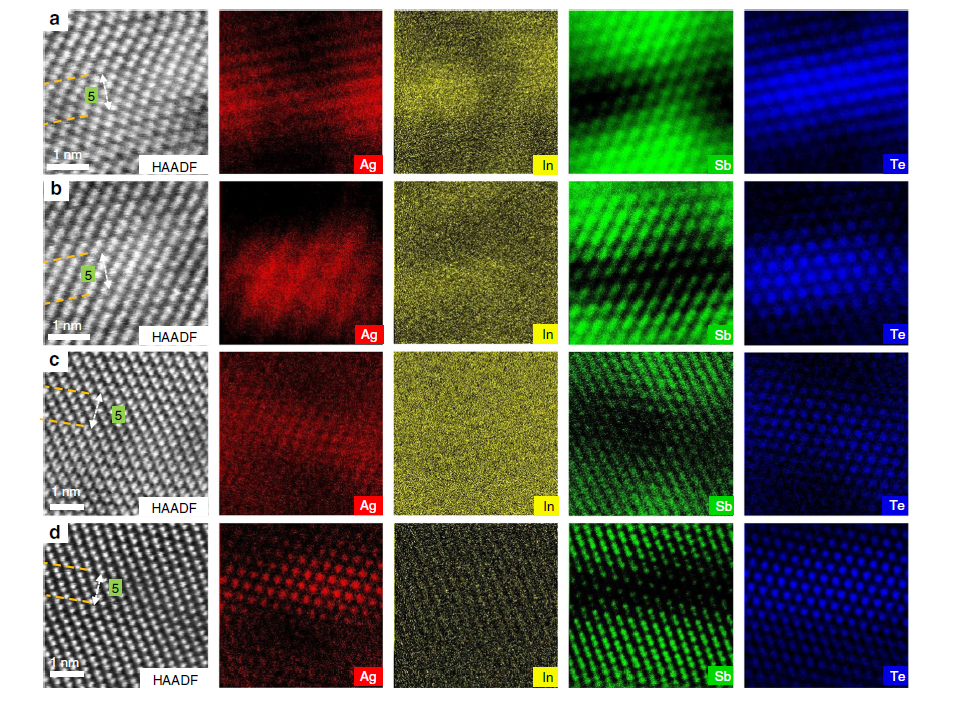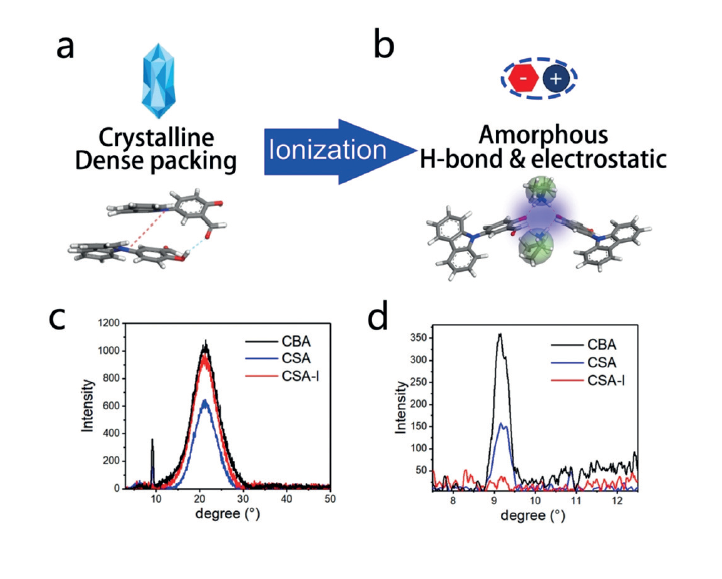-
03-03-2020
Epitaxial Growth of 6 in. Single-Crystalline Graphene on a Cu/Ni (111) Film at 750 °C via Chemical Vapor Deposition
The future electronic application of graphene highly relies on the production of large-area high-quality single-crystal graphene. However, the growth of single-crystal graphene on different substrates via either single nucleation or seamless stitching is carried out at a temperature of 1000 °C or higher. The usage of this high temperature generates a variety of problems, including complexity of operation, higher contamination, metal evaporation, and wrinkles owing to the mismatch of thermal expansion coefficients between the substrate and graphene. Here, a new approach for the fabrication of ultraflat single-crystal graphene using Cu/Ni (111)/sapphire wafers at lower temperature is reported. It is found that the temperature of epitaxial...[ Learn more ]
-
03-03-2020
Direct atomic insight into the role of dopants in phase-change materials
Doping is indispensable to tailor phase-change materials (PCM) in optical and electronic data storage. Very few experimental studies, however, have provided quantitative information on the distribution of dopants on the atomic-scale. Here, we present atom-resolved images of Ag and In dopants in Sb2Te-based (AIST) PCM using electron microscopy and atom-probe tomography. Combing these with DFT calculations and chemical-bonding analysis, we unambiguously determine the dopants’ role upon recrystallization. Composition profiles corroborate the substitution of Sb by In and Ag, and the segregation of excessive Ag into grain boundaries. While In is bonded covalently to neighboring Te, Ag binds ionically. Moreover, In doping accelerates the crys...[ Learn more ]
-
03-03-2020
Realization of wafer-scale nanogratings with sub-50 nm period through vacancy epitaxy
Gratings, one of the most important energy dispersive devices, are the fundamental building blocks for the majority of optical and optoelectronic systems. The grating period is the key parameter that limits the dispersion and resolution of the system. With the rapid development of large X-ray science facilities, gratings with periodicities below 50 nm are in urgent need for the development of ultrahigh-resolution X-ray spectroscopy. However, the wafer-scale fabrication of nanogratings through conventional patterning methods is difficult. Herein, we report a maskless and high-throughput method to generate wafer-scale, multilayer gratings with period in the sub-50 nm range. They are fabricated by a vacancy epitaxy process and coated with X...[ Learn more ]
-
03-03-2020
Programmable graphene nanobubbles with threefold symmetric pseudo-magnetic fields
Graphene nanobubbles (GNBs) have attracted much attention due to the ability to generate large pseudo-magnetic fields unattainable by ordinary laboratory magnets. However, GNBs are always randomly produced by the reported protocols, therefore, their size and location are difficult to manipulate, which restricts their potential applications. Here, using the functional atomic force microscopy (AFM), we demonstrate the ability to form programmable GNBs. The precision of AFM facilitates the location definition of GNBs, and their size and shape are tuned by the stimulus bias of AFM tip. With tuning the tip voltage, the bubble contour can gradually transit from parabolic to Gaussian profile. Moreover, the unique threefold symmetric pseudo-magn...[ Learn more ]
-
03-03-2020
Self-Stabilized Amorphous Organic Materials with Room-Temperature Phosphorescence
The stability of pure organic room-temperature phosphorescent (RTP) materials in air has been a research hotspot in recent years. Without crystallization or encapsulation, a new strategy was proposed to obtain self-stabilized organic RTP materials, based on a complete ionization of a photo-induced charge separation system. The ionization of aromatic phenol 4-carbazolyl salicylaldehyde (CSA) formed a stable H-bonding anion–cation radical structure and led to the completely amorphous CSA-I film. Phosphorescent lifetimes as long as 0.14 s at room temperature and with direct exposure to air were observed. The emission intensity was also increased by 21.5-fold. Such an amorphous RTP material reconciled the contradiction between phosphorescen...[ Learn more ]





